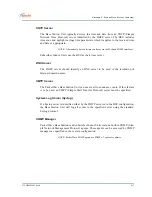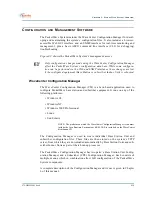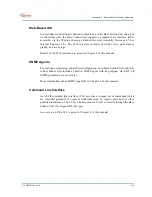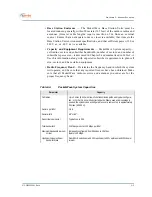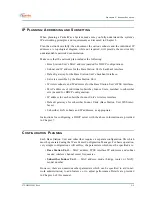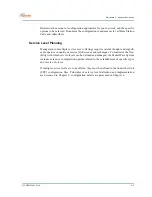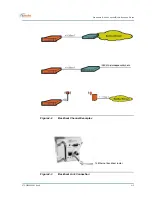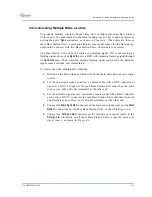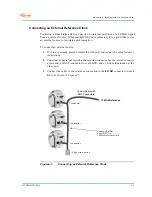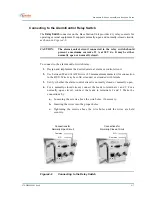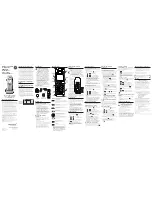
3–5
070-20000340-01 Rev A
C
H A PTER
3. S
Y STEM
P
LA NNI NG
IP P
LANNING
: A
DDRESSING
AND
S
UBNET TING
When planning a PacketWave System, make sure you fully understand the system’s
IP networking principles and requirements as discussed in Chapter 2.
Plan the network carefully; then document the various subnets and the individual IP
addresses. A topological diagram, while not required, will provide the most readily
understandable network documentation.
Make sure that the network plan includes the following:
• Base Station Unit’s MAC address (needed for DHCP configuration).
• Subnet and IP address for the Base Station Unit’s backhaul interface.
• Default gateway for the Base Station Unit’s backhaul interface.
• Servers accessible by the Base Station Unit.
• Wireless subnets, and IP addresses for the Base Station Unit’s WSS interfaces.
• MAC addresses of individual subscriber Indoor Units, matched to subscriber
site (needed for DHCP configuration).
• IP address for each subscriber Indoor Unit’s wireless interface.
• Default gateways for subscriber Indoor Units (Base Station Unit WSS inter-
faces).
• Subscriber LAN subnets and IP addresses, as appropriate.
Instructions for configuring a DHCP server with the above information are provided
in Chapter 7.
C
ONFIGURATION
P
L ANNING
Each Base Station Unit and subscriber requires a separate configuration file which
must be generated using the WaveCenter Configuration Manager. For basic operation,
very simple configurations will suffice; the parameters which must be specified are:
•
Base Station Unit
— MAC address; WSS interface IP addresses and subnet
masks; wireless channel center frequencies.
•
Subscriber Indoor Unit
— MAC address; mode (bridge, router, or NAT);
model number.
However, there are numerous other parameters which can be specified to aid in net-
work administration, to add features, or to adjust performance. Details are provided
in Chapter 6 of this manual.





